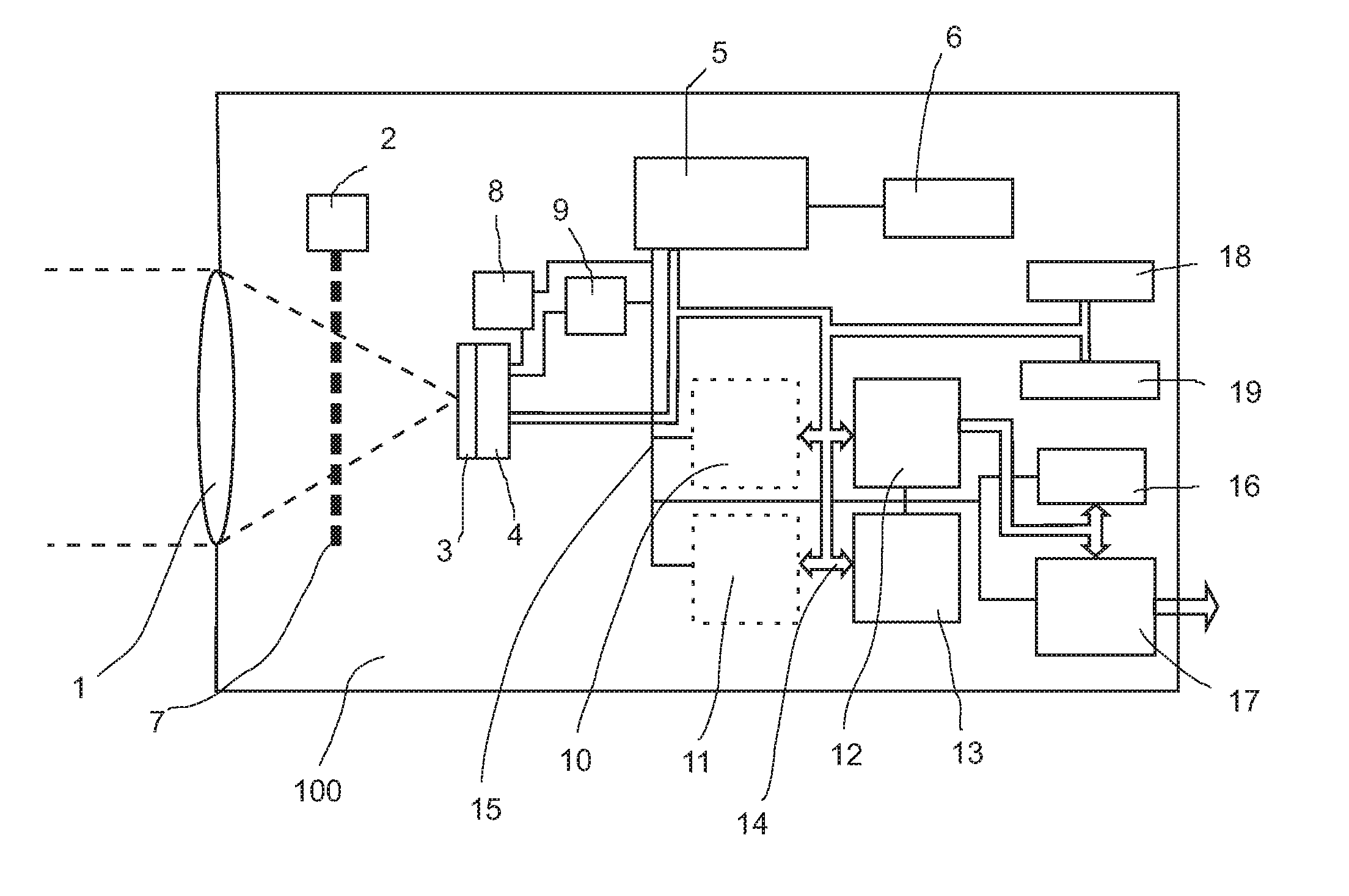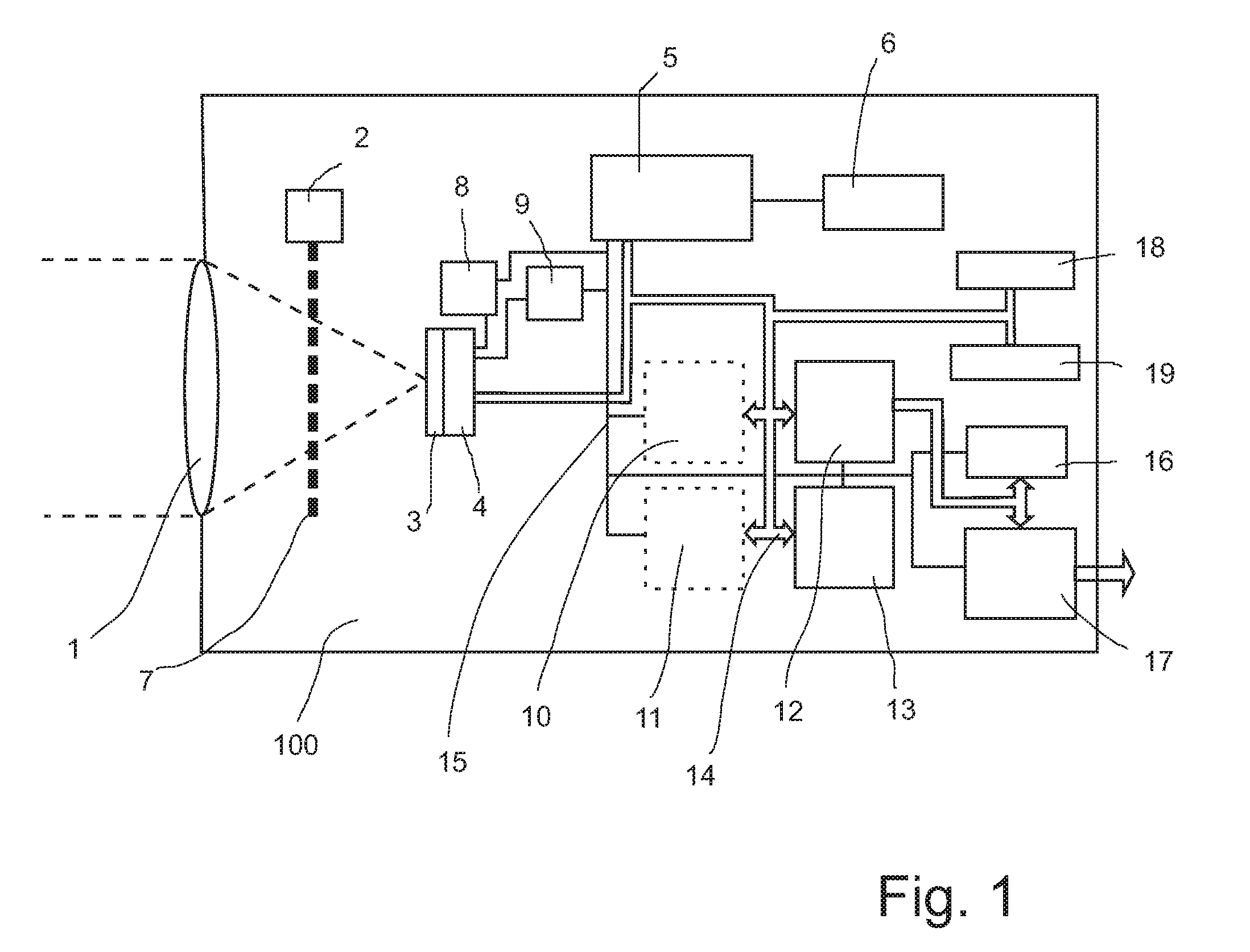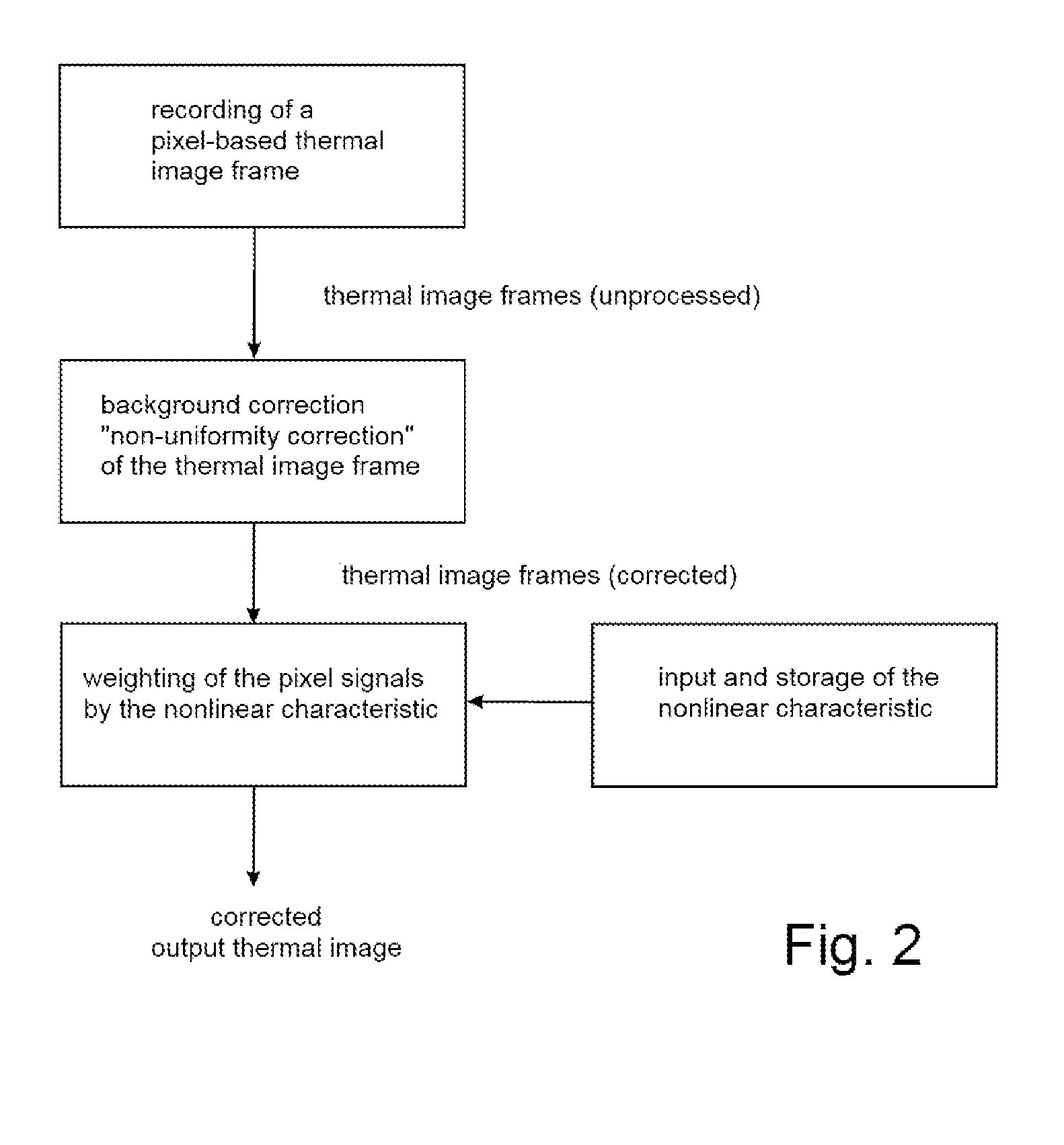Thermographic Camera and Method for the Recording and/or Modification and Reproduction of Thermal Images of a Scene and/or of an Object
a technology of thermal images and cameras, applied in the field of thermal cameras, can solve the problems of inability of human observers to resolve such fine gray gradients with certainty, higher acquisition costs and operating costs, and achieve the effect of optimal signal resolution
- Summary
- Abstract
- Description
- Claims
- Application Information
AI Technical Summary
Benefits of technology
Problems solved by technology
Method used
Image
Examples
Embodiment Construction
[0037]FIG. 1 shows a thermographic camera 100 with its essential components comprising IR optics 1, shutter control device 2, microbolometer FPA (focal plane array) 3, readout unit 4, and processor unit 5.
[0038]The IR optics 7 project an infrared image on the microbolometer FPA (focal plane array) 3. The microbolometers are generally arranged in matrix shape. However, as was already mentioned above, other arrangements are also conceivable. The processor unit 5 controls the microbolometer FPA 3 in a clock pulse given by the clock control 6 for recording frames in a corresponding manner. Further, the processor unit 5 controls the shutter control device 2 in a shutter clock that can be given as an adjustable parameter to swivel the shutter 7 into or out of the beam path so that dark images and thermal images are generated alternately in a determined sequence.
[0039]When the shutter 7 is swiveled in, this means that the beam path is interrupted and the microbolometer FPA 3 receives only ...
PUM
 Login to View More
Login to View More Abstract
Description
Claims
Application Information
 Login to View More
Login to View More - R&D
- Intellectual Property
- Life Sciences
- Materials
- Tech Scout
- Unparalleled Data Quality
- Higher Quality Content
- 60% Fewer Hallucinations
Browse by: Latest US Patents, China's latest patents, Technical Efficacy Thesaurus, Application Domain, Technology Topic, Popular Technical Reports.
© 2025 PatSnap. All rights reserved.Legal|Privacy policy|Modern Slavery Act Transparency Statement|Sitemap|About US| Contact US: help@patsnap.com



